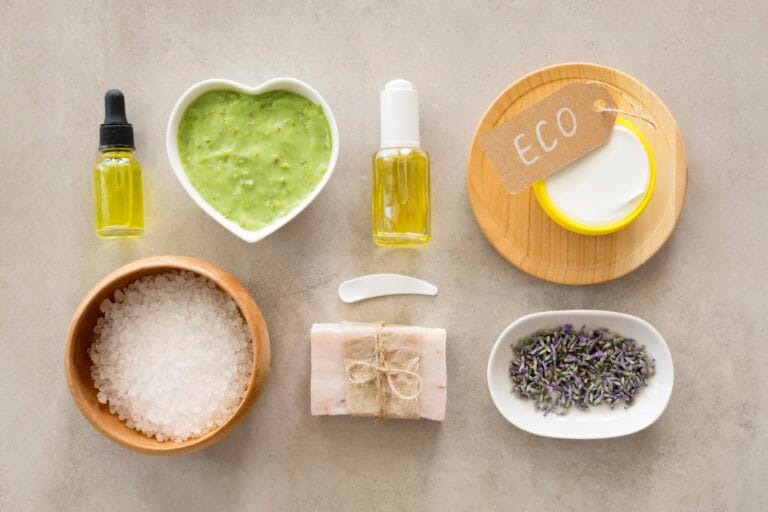
Here’s How to Get Blackhead-Free Skin and How to Prove Non-Comedogenic Product Claims

- What Are Blackheads and Their Types?
- Factors Causing Blackheads
- Understanding the Term Non-Comedogenic and Its Levels
- Why Non-Comedogenic Products Are Important for Oily and Acne-Prone Skin
- The Right Steps to Prevent Blackheads with Proper Skin Care
- Challenges Behind Non-Comedogenic Claims in Beauty Products
What Are Blackheads and Their Types?
Comedones are a type of acne that forms when skin pores become clogged with a mixture of excess oil (sebum), dead skin cells, and dirt. Comedones fall under the category of non-inflammatory acne, meaning they do not cause inflammation like red pimples or pus-filled acne. There are two types of comedones:
1. Open Comedones (Blackheads)
open comedones (blackheads), which appear on the surface of pores due to the oxidation of melanin in the sebum when exposed to air, and
2. Closed Comedones (whiteheads)
closed comedones (whiteheads), which appear white because the pores are covered by a thin layer of skin.
Factors Causing Blackheads
Naturally, the skin produces oil to maintain moisture. Comedones can form due to the buildup of excess sebum from the skin’s oil glands. This is worsened by the presence of dead skin cells, dirt, and pollution that clog the pores. If bacteria infect the clogged pore, comedones can develop into inflamed acne.
In addition to external factors, internal body factors also play a significant role in comedone formation. These include hormonal changes such as puberty, menstruation, pregnancy, and the use of birth control pills. Another contributing factor is the use of pore-clogging (comedogenic) cosmetic products. Poor skin hygiene or washing the face too often can also trigger excessive oil production.
Understanding the Term Non-Comedogenic and Its Levels

Source: Freepik
Non-comedogenic is a term used in the beauty industry to refer to products formulated not to clog pores. Typically, these products do not contain high levels of oil, heavy minerals, or lanolin. Comedogenic activity is commonly found in ingredients like apricot kernel oil, cocoa butter, corn oil, isopropyl myristate, mineral oil, acetylated lanolin, octyl palmitate, sunflower oil, sodium lauryl sulfate, and tocopherol.
Researchers have developed a scale from 0 to 5 to measure the comedogenic level of an ingredient. A score of 0 represents non-comedogenic, 1 means slightly comedogenic, 2–3 moderately comedogenic, and 4–5 highly comedogenic. The higher the number, the greater the likelihood of triggering comedones, and more thorough cleansing is needed to prevent clogged pores.
Why Non-Comedogenic Products Are Important for Oily and Acne-Prone Skin
A non-comedogenic label is often the first indicator when choosing products for oily or acne-prone skin. These products are typically lightweight and contain compounds that absorb into the skin without blocking the pores, reducing the risk of comedone formation. Examples of products often labeled non-comedogenic include moisturizers, sunscreens, serums, facial cleansers, and more. Water-based ingredients are generally non-comedogenic, which is why recent skincare trends favor water-based formulations.
The Right Steps to Prevent Blackheads with Proper Skin Care
Regardless of whether a product is comedogenic or not, users must still cleanse their skin properly and thoroughly. Buildup and blockages in pores can worsen skin conditions. Double cleansing is essential, especially after using makeup or sunscreen, to ensure that no residue clogs the pores.
Use a gentle cleanser to lift the oil layer from the skin while preserving its protective moisture barrier. Also, avoid using products made with heavy oils, exfoliate lightly 1–2 times a week to remove dead skin cells, and use water-based moisturizers.
Challenges Behind Non-Comedogenic Claims in Beauty Products
To date, there is no official standard that regulates testing for “non-comedogenic” labeling, allowing manufacturers to make such claims without clinical trials. As consumers, it's important to be discerning and understand the ingredients in a product to make informed choices. The reaction of active ingredients can vary between individuals, so if symptoms like itching, rashes, or allergic reactions occur, stop use immediately and consult a doctor.
Read more:
3 Recommendations for Mandatory Testing Before Cosmetic Products Are Distributed
To ensure that the non-comedogenic claims on your cosmetic products are scientifically proven, conduct laboratory testing with IML Research. Our team of experts is ready to help verify the safety and effectiveness of your product formulations, ensuring your test results are valid, reliable, and ready to support responsible marketing claims. Consult with IML Research's expert team for a free consultation and ensure that every claim on your product is based on scientific data, not just empty promises.
Author: Delfia
Editor: Sabilla Reza
References:
James E. Fulton, JR. 1989. Comedogenicity and Irritancy of Commonly Used Ingredients in Skin Care Products. Society of Cosmetic Chemists.
Schäfer, Natalia & Sobczyk, Małgorzata & Burczyk, Dawid & Balwierz, Radosław & Skotnicka-Graca, Urszula. (2022). Possibilities of using vegetable oils in acne skin care. Aesthetic Cosmetology and Medicine. 11. 49-54. 10.52336/acm.2022.007.



